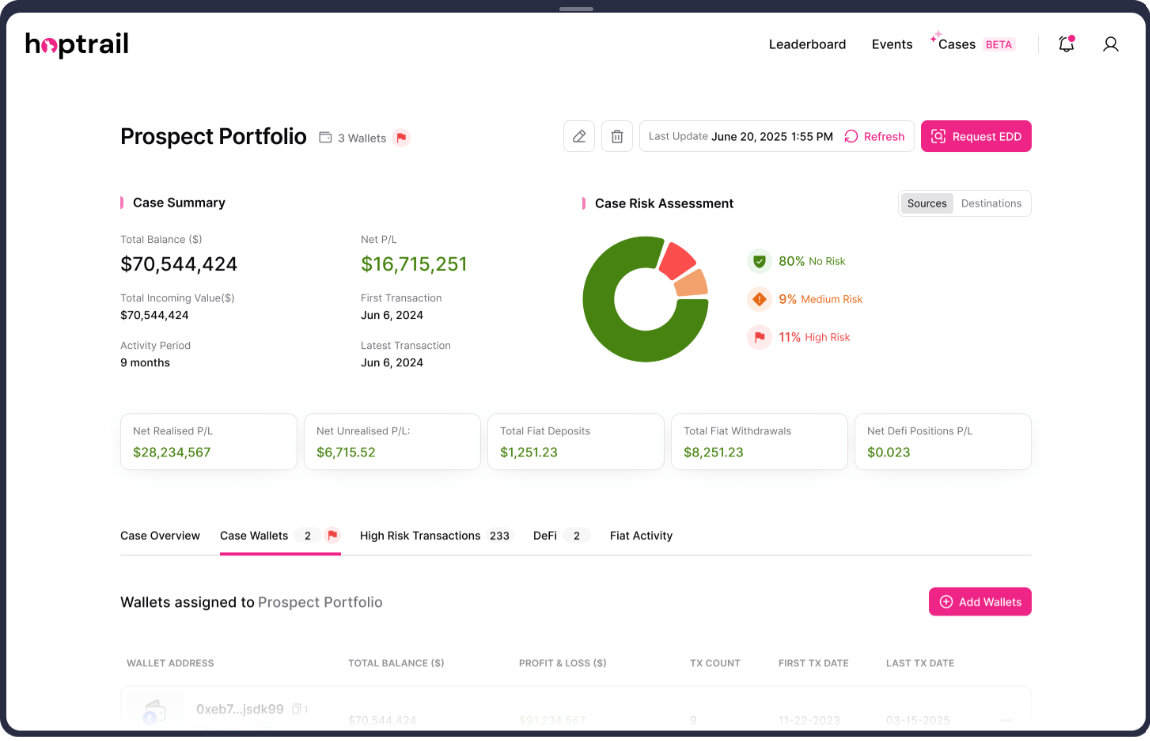Crypto Onboarding? Five Key Considerations

Despite recent market challenges, more and more family offices and high net worth individuals in Asia are investing in digital assets.
The growing pool of digital asset-savvy investors is an attractive business opportunity for many in financial services: demand for wealth management services and diversification - be it into assets such as art, wine, or property - is on the increase. But that opportunity brings with it challenges.
For many regulated services, digital assets are complex and fraught with risk. Where AML checks are mandated by regulators, there is genuine concern that risks pertaining to digital assets are misinterpreted or missed altogether. The lack of clarity on the source of funds or potential financial crime risks is often perceived to be an insurmountable issue, shutting out a new generation of wealthy potential clients.
So, how should proper due diligence on digital asset investors work? And what tools are required to appropriately assess cryptocurrency source of funds?
Part of the answer lies in blockchain analytics. Using the right tools and data can help you gather the relevant information on a prospect’s digital assets: their sources and destinations of funds, high-risk transactions, and known counterparties. Another is finding the right analytics partner who can help to reconstruct the client’s narrative, decipher some of the complexity, and make sense of their crypto journey.
Yet, knowing what data to obtain up front is usually the first (and biggest) hurdle. Getting the right information initially not only sets the basis for robust diligence, it can massively reduce onboarding time, from weeks to a matter of days.
Here are a few things to consider:
- On / Off-Ramp Venues: knowing how your client began their journey is a critical starting point. The venues which enable purchases of crypto with fiat currency are often referred to as “on-ramps”. Data from on-ramps will give you insight on fiat deposits and withdrawals, and highlight which assets were traded from (and to) fiat. Understanding the fiat in-flows creates the basis for analysing subsequent trading.
- Deposit Addresses: the client’s deposit addresses are the jumping points to connect the wider trading ecosystem, showing how the user moved funds around from venue to venue, and allowing for red-flag analysis on any unknown counterparties. Ensure to collect deposit addresses for all services used by the client, across all assets.
- Non-Custodial Wallets: Has the client used non-custodial wallets for cold storage or to access decentralised finance (DeFi)? Knowing these will make it far easier to map out a client’s ecosystem and assets. Most non-custodial wallets will not be tagged in blockchain analytics platforms, so asking that question up front will make the analysis far quicker.
- Token Trading: Staking, liquidity provision and other earn facilities are popular in DeFi. Often these actions are signposted on publicly available block explorers which help with information gathering, but conducting further research on these protocols will help in understanding what transactions and activities to look out for, and whether they have been exposed to any red flags.
- Airdrop Red Flags: Any wallet that is big enough to attract attention will have received unsolicited airdrops from low-profile token projects – some have malicious exploits; others are dropped to artificially widen the holder base. Most suspicious tokens are flagged on public explorers, but this does not necessarily indicate heightened risks to the recipients of such tokens. There is nothing the recipients can do to stop these airdrops, and the presence of these may just be false positive red flags.
Part of the broader challenge lies in providing an analysis that is concise without being complex. Too much information may be confusing. Digital assets and blockchain knowledge can be extremely jargon heavy.
As shown above, there is often a significant amount of data to digest, which can be overwhelming even to someone well-trained in due diligence or compliance.
That is why we come back to selecting the right partner. Demystifying crypto with the right vendor enables clear, detailed narrative-focused analysis which is accessible to all, regardless of their expertise.
We also know from experience that putting the right steps in place can shave days if not weeks off onboarding time without compromising on quality.
Hoptrail has partnered with Raion Labs to empower businesses to onboard the next generation of crypto wealth across Asia.
Get in touch with us to find out more here.

Crypto HNWIs: How did they make their fortune?

Cases: new source of wealth capabilities and upcoming features

Why we built Cases: A personal note on solving the crypto source of wealth headache
Subscribe to the Hoptrail newsletter
Sign up with your email address to get the latest insights from our crypto experts.
